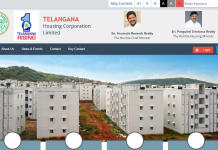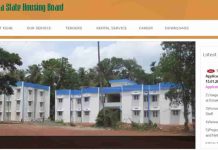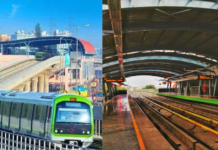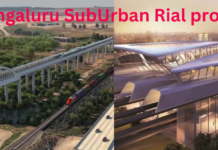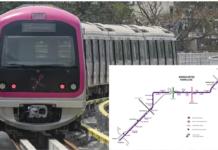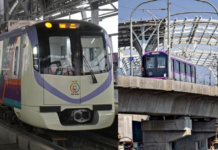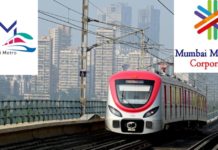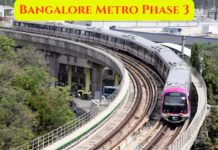Introduction:
The Visakhapatnam Metro Rail Project is a visionary initiative spearheaded by the Government of Andhra Pradesh (GoAP) to introduce a state-of-the-art metro rail system in Visakhapatnam. Designed to address the city’s growing transportation needs and contribute to its urban development, this project will span a total length of 76.90 km and cover four main corridors. With a focus on modernity, efficiency, and sustainability, the metro rail system is set to transform Visakhapatnam’s public transportation landscape.
The project aims to offer a sophisticated and eco-friendly solution to the city’s mobility challenges. It will feature advanced infrastructure, iconic stations, and green technologies, making it a model for future urban transit systems. This article provides a comprehensive overview of the Visakhapatnam Metro Rail Project, detailing its corridors, infrastructure, green initiatives, and the expected impact on the city.

Visakhapatnam Metro Rail System:
The Visakhapatnam Metro Rail Project will comprise four corridors, each serving different parts of the city and surrounding regions:
- Steel Plant Junction to Kommadi on NH-16 (34.23 km)
- Gurudwara to Old Post Office (5.28 km)
- Chinna Waltair (RK Beach) to Thatichetlapalem (6.91 kilometers)
- Kommadi to Bhogapuram Airport (30.48 km)
Each corridor is strategically designed to connect key areas of Visakhapatnam, providing efficient and reliable transportation options for commuters.
Also Read: Mega Projects in Andhra Pradesh 2024: Shaping the State’s Future
Iconic Stations and Infrastructure:
The metro stations will be architectural marvels, blending state-of-the-art designs with functional utility. Here’s a glimpse of what to expect:
- Design and Construction: The stations will feature contemporary designs with pleasant exteriors and interiors. They will adhere to standard codes and NFPA 130 norms for fire safety, ensuring a secure environment for passengers.
- Facilities: Each station will be equipped with escalators and lifts to facilitate smooth passenger movement. Safety features will include CCTV cameras, X-ray machines for baggage scanning, human scanners, and comprehensive fire safety systems. The stations will also have clear signage, public display boards, and announcement systems to assist commuters.
- Amenities: Stations will be designed to be commuter-friendly, offering various amenities to enhance the travel experience.
Green Metro Concept:
The Visakhapatnam Metro aims to set a benchmark in environmental sustainability. Here’s how:
- Eco-Friendly Design: The metro system will be designed to achieve near-zero carbon emissions. Greenery will be integrated alongside the tracks to enhance the aesthetic appeal and environmental benefits.
- Solar Power: Solar PV panels will be installed on station rooftops, depots, service buildings, and viaducts to harness natural light and contribute to the metro’s self-sustainability. Surplus solar energy could potentially be supplied to other organizations.
- Green Building Standards: Stations will be built to meet Platinum rating criteria as per the Indian Green Building Council norms, underscoring the project’s commitment to sustainability.
Energy Conservation Measures:
The metro rail system will incorporate several energy conservation measures:
- Regenerative Braking: Trains will use regenerative braking to produce traction energy, which will reduce greenhouse gas emissions.
- Efficient Equipment: Variable Voltage Variable Frequency (VVVF) drives will be used for escalators and elevators, and LED lighting will be installed throughout the station premises. Energy-efficient equipment will be utilized for environmental control systems.
First and Last Mile Connectivity:
Effective first and last-mile connectivity is crucial for the success of the metro system. The project will feature:
- Feeder Services: E-cycles, E-rickshaws, and tied-up Metro cabs/auto-rickshaws will be available at key stations. These services will have fixed fares to ensure cost-effectiveness and convenience for commuters.
- Parking Zones: Adequate parking facilities will be provided for feeder services at important stations to streamline connectivity.
Advanced Digital Technology:
The metro system will leverage cutting-edge digital technology to enhance the commuting experience:
- Automatic Ticketing: Automatic Ticket Vending (ATV) machines will be installed, and smart travel cards will be introduced for seamless travel.
- Information Systems: LED glow signage boards and a dedicated metro app will provide real-time information and updates to commuters.
- Continuous Updates: Technological advancements will be continuously integrated to keep the system at the forefront of digital innovation.
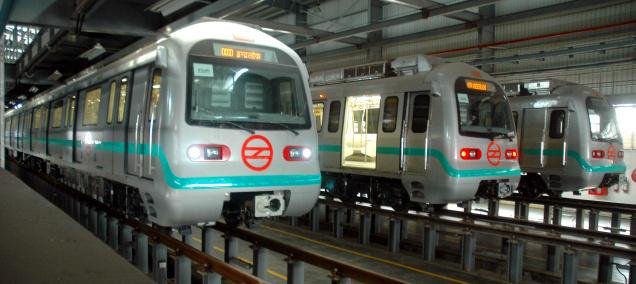
Metro Stations as Commercial Hubs:
The metro stations will serve as commercial hubs, featuring:
- Retail and Entertainment: Stations like Kommadi, Madhurawada, Railway Station, Dwaraka Bus Station, Gajuwaka, Saraswati Circle, RK Beach (Chinna Waltair), and Steel Plant Junction will host retail outlets, entertainment zones, multiplexes, mini auditoriums, and daycare centers.
- Community Spaces: These commercial hubs will cater to diverse needs, offering shopping, leisure, and community engagement opportunities.

Employment Generation:
The metro rail project is expected to have a significant impact on employment:
- During Construction: Approximately 8,000 direct and indirect jobs will be created.
- Post-Opening: Around 5,000 permanent positions will be available once the services commence, contributing to the city’s economic growth and quality of life.
Vizag Metro: Enhancing Urban Mobility
Visakhapatnam, known as the City of Destiny and the Jewel of the East Coast, is Andhra Pradesh’s largest city and its financial and executive capital. With a population of 2.54 million as of 2021 and an urban agglomeration population of around 2.97 million, the city is a major hub for education, health, industry, and tourism.
Given its rapid growth and the challenges associated with traffic congestion, the Visakhapatnam Metro Rail Project is a vital solution to meet the city’s transportation needs. The metro system is designed to offer a fast, safe, reliable, efficient, comfortable, pollution-free, and affordable mode of transport.
The project aims to accommodate a daily passenger capacity of 5-6 lakhs by 2024, with plans to expand to over 20 lakhs per day by 2054. The economic and social benefits are significant, with an estimated Economic Internal Rate of Return (EIRR) of 19.10%, reflecting the enhanced living standards for the city’s residents.

Project Estimated Cost:
metro rail project at an estimated cost of ₹14,309 crore. On December 15, 2023, the State issued Cabinet approval for the Detailed Project Report (DPR) through an official government order dated December 29.
Here is a detailed table for each corridor of the Visakhapatnam Metro Rail Project:
Corridor I: Steel Plant to Kommadi
| Station Name | Location Description |
|---|---|
| Steel Plant Station | Starting point at Steel Plant area |
| Vadlapudi Station | Residential area |
| Srinagar Station | Major locality within Visakhapatnam |
| Chinna Gantada Station | Commercial and residential area |
| Gajuwaka Station | Industrial zone |
| Autonagar Station | Automotive and industrial area |
| BHEL / BHPV Station | Key industrial area |
| Sheela Nagar Station | Residential and commercial area |
| Airport Station | Near Visakhapatnam Airport |
| Kakani Nagar Station | Residential area |
| NAD Junction Station | Transport and commercial hub |
| Madhavadhara / Geological Survey of India Station | Important educational and survey institutions |
| Murali Nagar Station | Residential area |
| Govt. Polytechnic College Station | Educational institution |
| Kancharapalem Station | Residential area |
| Tadichetlapalem Station | Local residential area |
| Akkayyapalem Station | Residential and local commercial area |
| Gurudwara Station | Major locality and religious center |
| Maddilapalem Station | Residential and commercial area |
| MVP Colony / Isukathota Station | Key residential area |
| Venkojipalem Station | Residential area |
| Hanumanthawaka Station | Residential and commercial area |
| Adarsh Nagar Station | Local residential area |
| Indira Priyadarshini Zoological Park Station | Major landmark and recreational area |
| Yendada Station | Residential and local commercial area |
| Cricket Stadium Station | Near sports and recreational facilities |
| Shilparamam Station | Cultural and recreational area |
| Madhurawada Station | Major locality |
| Kommadi Junction | End point of Corridor I |
Also Read: Visakhapatnam Chennai Industrial Corridor (VCIC): Impact of real estate, growth and Nodes
Corridor II: Gurudwara to Old Post Office
| Station Name | Location Description |
|---|---|
| Gurudwara Station | Starting point, religious and residential area |
| Dwaraka Nagar Station | Commercial and residential area |
| RTC Complex Station | Major transport and commercial hub |
| Daba Gardens Station | Residential and commercial area |
| Saraswati Circle Station | Key commercial area |
| Purna Market Station | Market and commercial area |
| Old Post Office Station | End point, central business area |
Corridor III: Thatichetlapalem to R. K. Beach
| Station Name | Location Description |
|---|---|
| Thatichetlapalem Station | Starting point, residential area |
| New Railway Colony | Residential and commercial area |
| Visakhapatnam Railway Station | Major railway hub |
| Allipuram Junction | Local junction and commercial area |
| RTC Complex Station | Major transport and commercial hub |
| Sampath Vinayak Temple Station | Religious site and commercial area |
| Siripuram / VUDA Station | Educational and development area |
| Andhra University Station | Major educational institution |
| Chinna Waltair / R. K. Beach Station | Endpoint, near the popular beach area |
Corridor IV: Kommadi to Bhogapuram
| Station Name | Location Description |
|---|---|
| Kommadi Junction | Starting point, residential area |
| Marikavalasa Station | Residential and local area |
| Paradesipalem Station | Residential area |
| Boyapalem Station | Local residential area |
| Gambhiram Station | Residential area |
| Vemulavalasa Station | Residential and commercial area |
| Peddipalem Station | Local residential area |
| R Tallavalasa Station | Residential area |
| Thagarapuvalasa Station | Local residential area |
| Maharajpet Station | Residential area |
| Polipalle Station | Local residential area |
| Saravilli Station | Residential area |
| Bhogapuram International Airport Station | End point, near Bhogapuram Airport |
These tables provide a clear breakdown of each corridor’s stations, offering a snapshot of their locations and significance within the Visakhapatnam Metro Rail Project.
Also Read: Market Value of land in AP: Market Trends, Insights and How to check…
Conclusion:
The Visakhapatnam Metro Rail Project marks a significant milestone in the evolution of urban transportation in Visakhapatnam. By introducing a modern and eco-friendly metro system, the project promises to revolutionize the city’s public transport network, offering a reliable, efficient, and sustainable mode of travel for its residents.
The carefully planned corridors, state-of-the-art stations, and green initiatives reflect a commitment to not only improving mobility but also addressing environmental concerns. The integration of advanced digital technologies and the development of commercial hubs within metro stations further enhance the project’s potential to elevate the quality of urban life.
With the capacity to accommodate a growing number of passengers and create substantial employment opportunities, the Visakhapatnam Metro Rail Project is poised to drive economic growth and elevate the standard of living in the city. As Visakhapatnam continues to expand and develop, the metro rail system will play a crucial role in shaping its future, ensuring that the city remains at the forefront of modern urban transport solutions.
Source: Images used in this content were sourced from
Frequently Asked Questions :
The Visakhapatnam Metro Rail Project is a major urban transit initiative by the Government of Andhra Pradesh aimed at introducing a modern metro system spanning 76.90 km across four corridors to improve urban mobility and sustainability in Visakhapatnam.
The project includes four main corridors: Steel Plant Junction to Kommadi, Gurudwara to Old Post Office, Thatichetlapalem to R.K. Beach, and Kommadi to Bhogapuram Airport.
Metro stations will feature contemporary designs, escalators, lifts, CCTV cameras, baggage scanning, and fire safety systems. They will also offer amenities to enhance the commuter experience.
The project focuses on eco-friendliness by integrating greenery, using solar power, and meeting Platinum rating standards for green buildings. Energy conservation measures like regenerative braking and efficient equipment will further reduce its environmental impact.
The metro system will provide efficient, reliable, and pollution-free transportation, support economic growth, create employment opportunities, and significantly improve urban connectivity and quality of life.
Suggested Articles:
Mega Projects in Andhra Pradesh 2024: Shaping the State’s Future
Market Value of land in AP: Market Trends, Insights and How to check…
Visakhapatnam Chennai Industrial Corridor (VCIC): Impact of real estate, growth and Nodes






